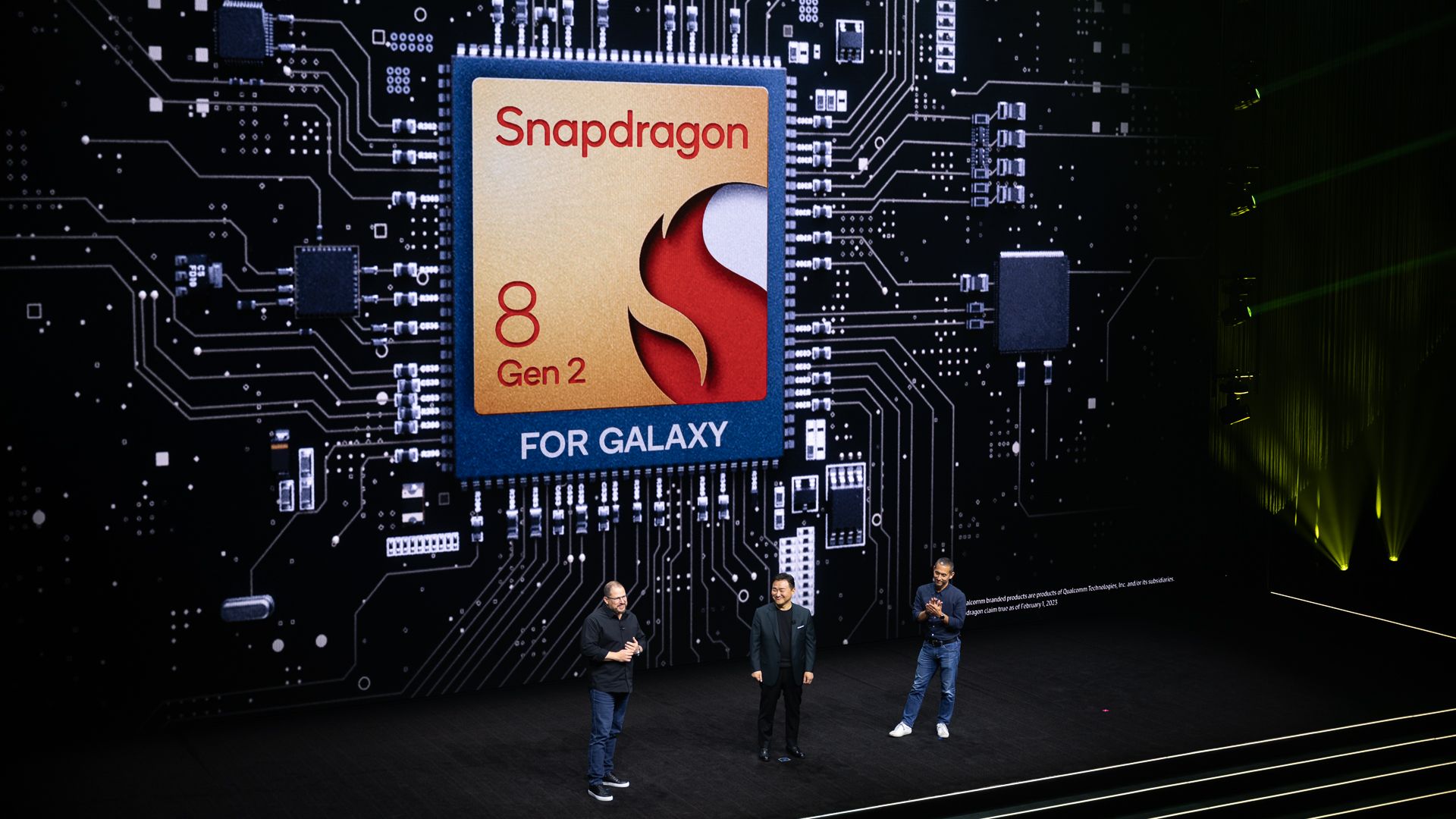The Samsung Galaxy S23 series was just revealed, and all three models are powered by the same chipset: the Snapdragon 8 Gen 2 for Galaxy. But what is it, and how is it different from the Snapdragon 8 Gen 2 in other phones and tablets?
Qualcomm announced the "Snapdragon 8 Gen 2 for Galaxy" at the same time Samsung revealed the Galaxy S23 series. The chip is a customized version of the Snapdragon 8 Gen 2 that was announced last year, which "features accelerated performance, making it the fastest Snapdragon ever and defining a new standard for connected computing," according to Qualcomm." Samsung and Qualcomm also said the chip will be used for the Galaxy S23 "globally," which means the age of using Exynos or Snapdragon chipsets for different regions of the world has ended -- for this year, at least.
The first difference between the regular Snapdragon 8 Gen 2 and the Galaxy version is the peak speed of the CPU -- the regular chip maxes out at 3.2 GHz on the "Prime" core, while the Galaxy chip reaches 3.36 GHz. That's right, a whole 160 MHz faster. The GPU has also been improved "in both performance and power efficiency" compared to the regular Snapdragon 8 Gen 2, though we don't have specific confirmed details there -- we'll have to wait until the first wave of reviews for more information.
Qualcomm mentioned a few other features in its press release, but none of them are necessarily exclusive to the Samsung chip. For example, the Galaxy S23 series is the first to use the Snapdragon "Cognitive ISP" to enhance images from the front-facing camera, but that feature is listed on the specs sheet for the regular Snapdragon 8 Gen 2. It's possible we might see other phones later this year use that feature, even if they have the non-Samsung chip.
So, should you be worried if you pick up an Android phone in 2023 with a regular Snapdragon 8 Gen 2? Simple answer: no. It's marginally faster, and smartphones don't operate at the maximum possible speeds most of the time anyway. You might get a few more frames per second in Fortnite, but that's about it.
Source: Qualcomm

